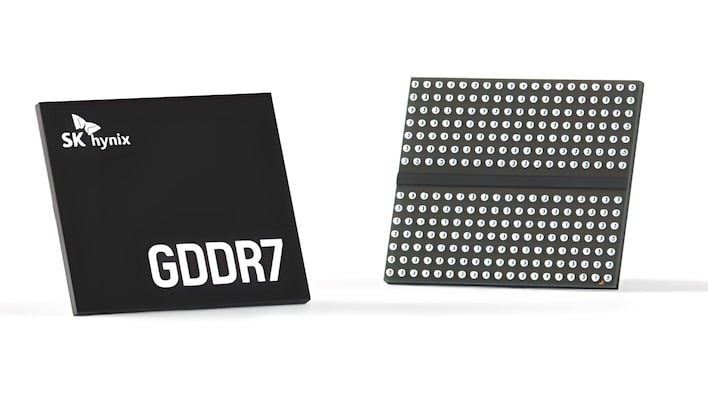There are basically three important characteristics for a memory technology: its latency, its bandwidth, and the power it uses. Disparate workloads have differing requirements, though. Graphics, generally speaking, cares relatively little about memory latency and will use up as much bandwidth as you can give it. That’s why “GDDR” memory exists: to provide the maximum memory bandwidth possible for graphics workloads.
Well, South Korea’s SK hynix has just announced mass production of what it is calling the “industry’s best GDDR7” memory. GDDR7 is, of course, the successor to GDDR6, and it offers a phenomenal increase in transfer rates: as much as 60% faster, according to hynix. Notably, it does this while offering a 50% increase in power efficiency, which will help to rein in the ever-increasing power budgets of GPU memory buses.
Connected to such a mighty GPU, 40-Gbps GDDR7 memory would give a peak bandwidth of 1,920 GB/second, or nearly two terabytes per second. That kind of memory bandwidth is currently only the domain of the aptly-named High Bandwidth Memory, but HBM requires exotic packaging and is expensive to implement. Meanwhile, GDDR7 is likely very close to pin-compatible with GDDR6, and should be much easier to bring to market.
Though we haven’t heard from AMD—actually, we haven’t heard much at all about the Navi 4x series in a while—NVIDIA is all but confirmed to be using GDDR7 on at least its high-end Blackwell consumer parts. Those are expected to be announced early next year, possibly at CES.

